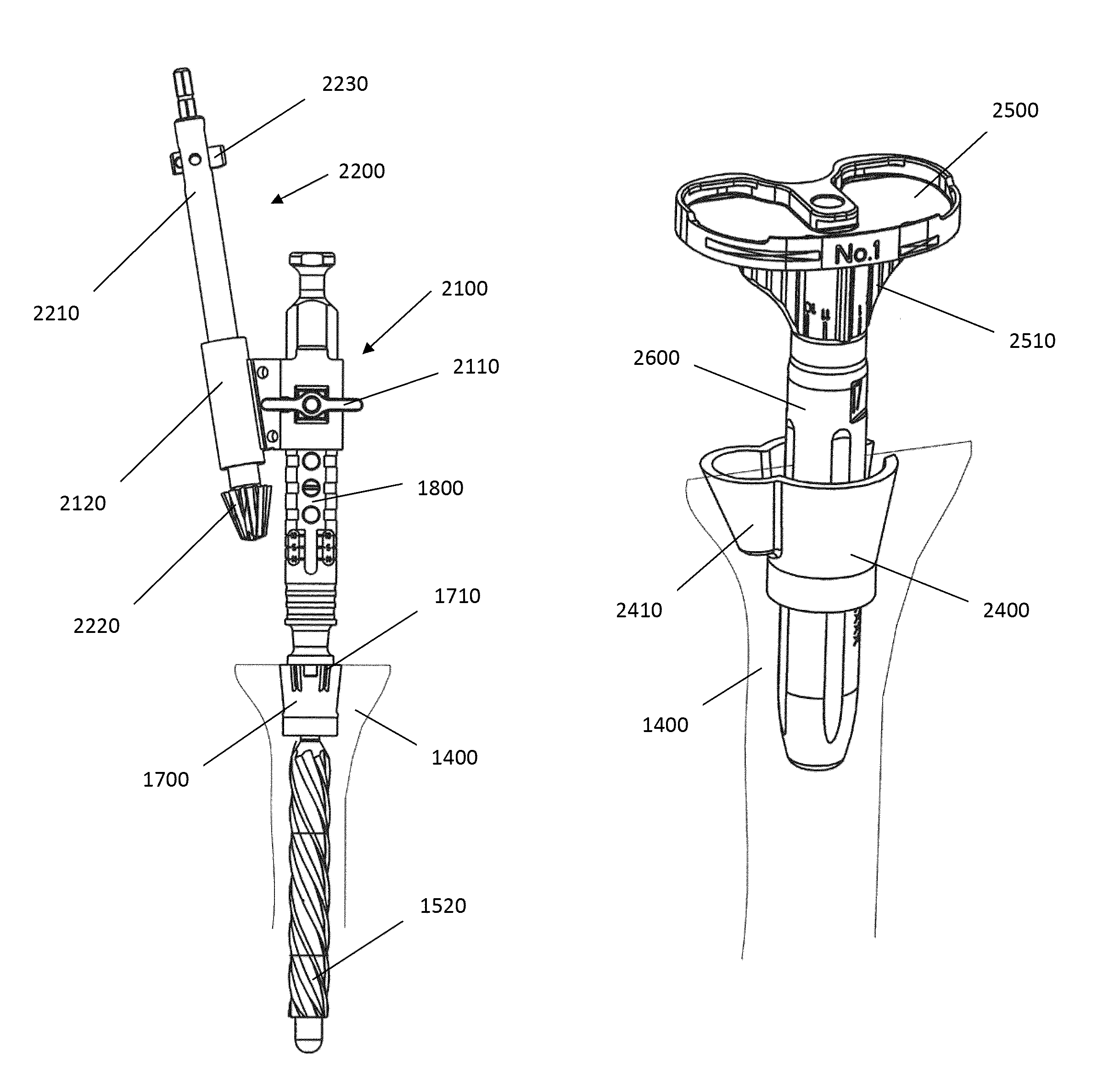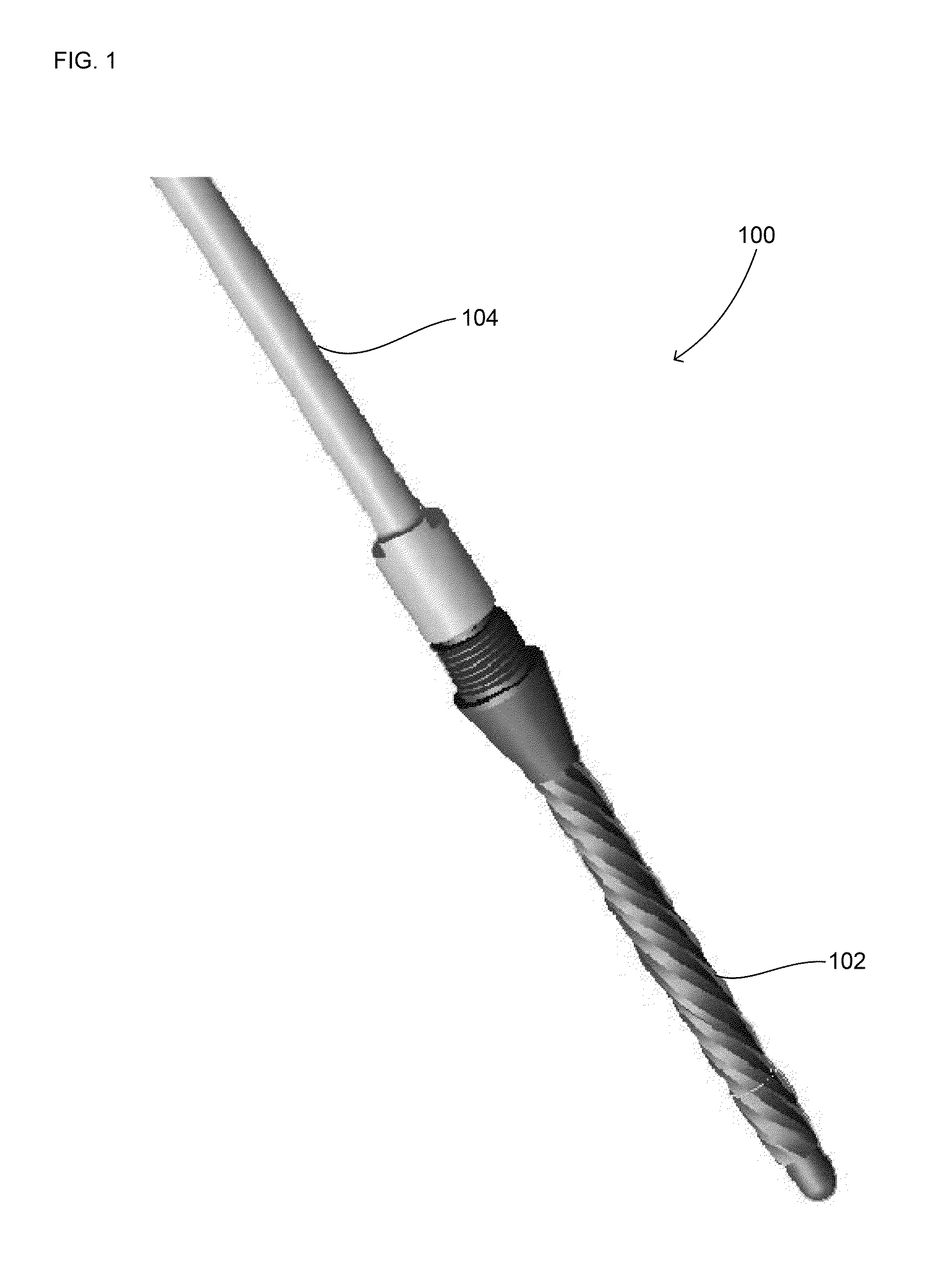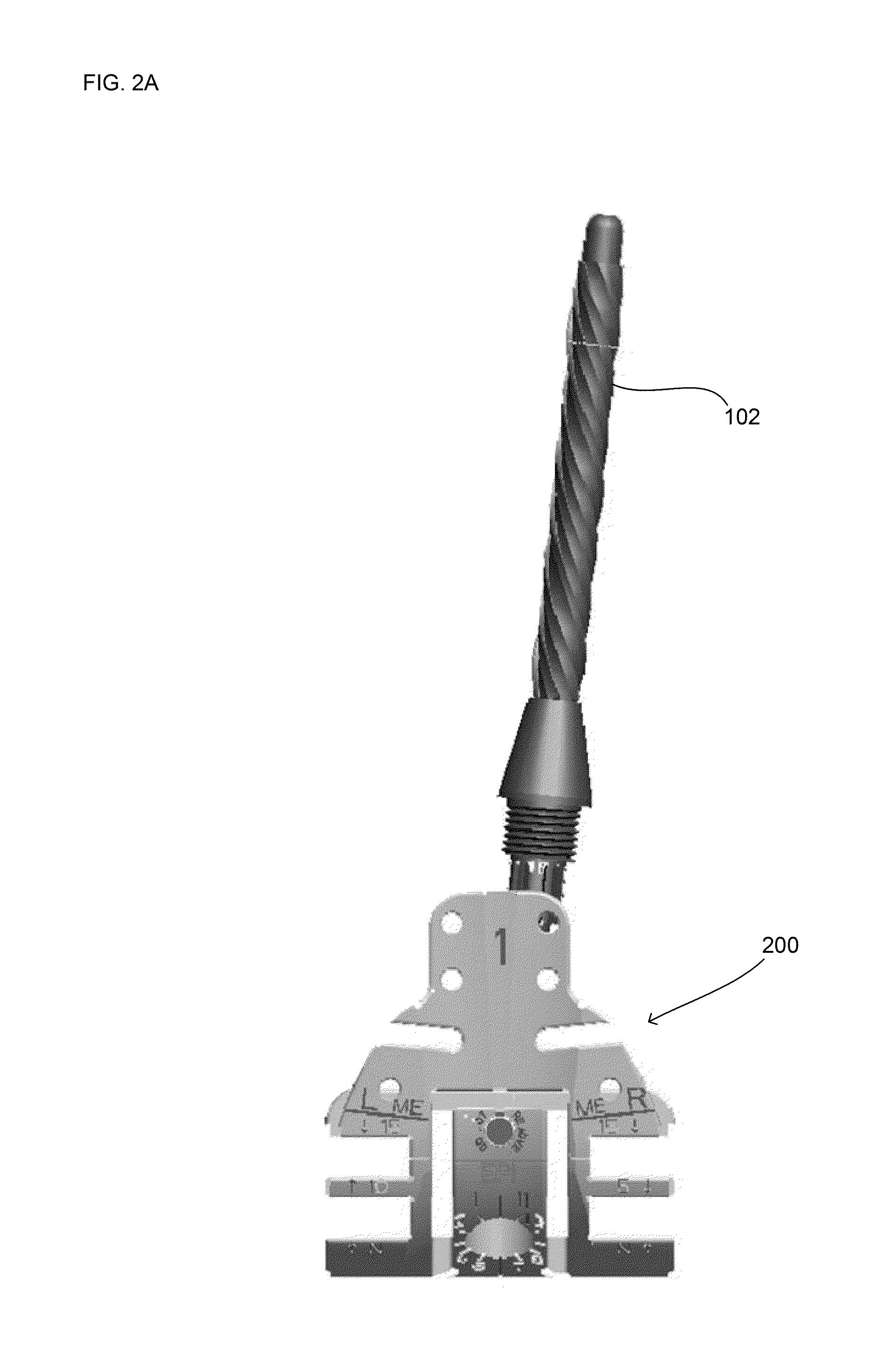Systems and methods for preparing bone voids to receive a prosthesis
a technology for preparing a bone to receive a prosthesis, applied in the field of surgical instruments for preparing a bone to receive a joint prosthesis, can solve the problems of reducing the ability of the patient to fully recover, and affecting the healing effect of the patient,
- Summary
- Abstract
- Description
- Claims
- Application Information
AI Technical Summary
Benefits of technology
Problems solved by technology
Method used
Image
Examples
Embodiment Construction
[0080]As used herein, when referring to the surgical reaming instruments of the present invention, the term “proximal” means closer to the surgeon or in a direction toward the surgeon and the term “distal” means more distant from the surgeon or in a direction away from the surgeon. The term “anterior” means towards the front part of the body or the face and the term “posterior” means towards the back of the body. The term “medial” means toward the midline of the body and the term “lateral” means away from the midline of the body.
[0081]FIG. 1 illustrates a side view of a two part reamer 100. The two part reamer consists of an IM reamer 102 and inline driver 104. In the assembled position as shown, longitudinal axes of the IM reamer 102 and inline driver 104 are coaxial. In a revision procedure, the initial step after removing the prosthesis located in the bone is to ream the bone generally along a longitudinal axis thereof. In total knee revision procedures, for example, the bone is ...
PUM
 Login to View More
Login to View More Abstract
Description
Claims
Application Information
 Login to View More
Login to View More - R&D
- Intellectual Property
- Life Sciences
- Materials
- Tech Scout
- Unparalleled Data Quality
- Higher Quality Content
- 60% Fewer Hallucinations
Browse by: Latest US Patents, China's latest patents, Technical Efficacy Thesaurus, Application Domain, Technology Topic, Popular Technical Reports.
© 2025 PatSnap. All rights reserved.Legal|Privacy policy|Modern Slavery Act Transparency Statement|Sitemap|About US| Contact US: help@patsnap.com



